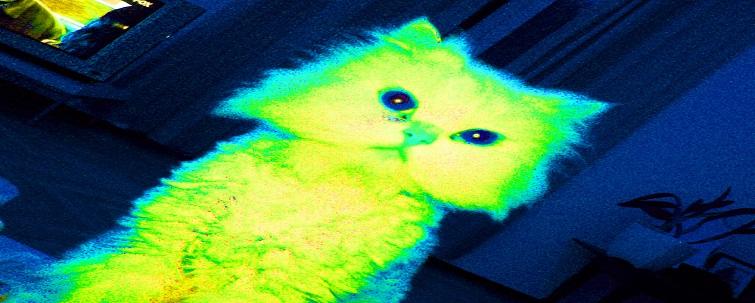A lot of science has associations with what we remember from our childhoods.
A lot of science has associations with what we remember from our childhoods. Anything that glows in the dark is suddenly a hundred times more interesting, and this opinion seems to be glued in our minds from when we were young right up to adulthood. It most likely dates back to the stick on stars we had on our ceilings, and the curiosity has never seemed to wear off.
Luckily for some scientists, making things glow in the dark may actually be of some use to the world, rather than just a novelty. Glowing green animals could be of use to research in environmental and conservation matters, and there is even some hope that fluorescent cats will aid human and feline medical research.
In August of last year, researchers from the Universities of Istanbul and Hawaii injected jellyfish DNA into a mother rabbit’s embryos and out of a litter of 8 bunnies, a quarter successfully glowed fluorescent green under black light. This may seem like the ideas of a mad scientist, but the experiment was actually part of an effort to improve treatments for life-threatening illnesses.
The findings of the study were that is definitely possible to insert a new, foreign gene into an animals’ genome without any pain or stress inflicted. Eventually, the researchers hope the technique can lead to new ways to produce medicines, such as developing animals that produce beneficial molecules in their milk. This would be especially useful in countries that are too poor to afford to pay for pharmaceutical plants to make drugs for them.
This technique has now been repeated so many times, that it seems a rite of passage for genetically modified animals that they have to be turned fluorescent green by scientists. The latest in the ever growing list is the domestic cat. Now who wouldn’t want a glow in the dark kitten?
Unfortunately for pet lovers everywhere, the whole point of this study was not to produce even cuter pets. The scientists involved in this particular research hoped to use the genetically modified cats in the study of HIV/AIDS.
Cats are susceptible to feline immunodeficiency virus (FIV) which is a close relative of HIV. The cats in this study were engineered to produce a protein that helps their bodies resist the FIV virus, and the jellyfish gene was used to see if it had been successful. In theory, further valuable information can be provided about AIDS in humans thanks to this study.
It just so happens that HIV and FIV are very similar, but the uses of GM cats for models of other human diseases are likely to be limited.
More than just the research
There are other methods and reasons for creating glowing animals, such as the research being conducted at Chester Zoo. Scientists there have developed a method of tracking one of the world’s most endangered amphibian species, the golden mantella frog.
The frogs have been heavily affected by the pet trade and destruction and fragmentation of their habitat, so scientists are injecting frogs at the zoo with a minuscule amount of fluorescent silicon, giving the animals a coloured fluorescent stripe that will make them easier to monitor in the wild.
The team is now going to Madagascar to track the tiny frogs to provide crucial information about dispersions, migration patterns and the areas of forest that should be protected for their conservation.
Many people read about these studies and assume that there is no use for animals to have the genes to glow in the dark and that the scientists involved are wasting time and money by trying.
However, digging a little deeper into the ideas reveals the potential of the findings of these experiments and that glowing in the dark is so much more than a bit of fun.
On the other hand, American biotechnology company Bioglow has developed ornamental glowing plants that its creator claims are “the first of their kind.”
DNA from luminescent marine bacteria was introduced to the chloroplast genome of a common houseplant to mimic the light emitted by fireflies. There may not be any obvious medical advantages to having a glowing plant in your home, so it sounds like this research was in fact just for show.
There’s no harm in having a little fun with science though, is there?
What do you think of these studies? Have your say in the comments section below.
Image: pinkiwinkitinki / Flickr









